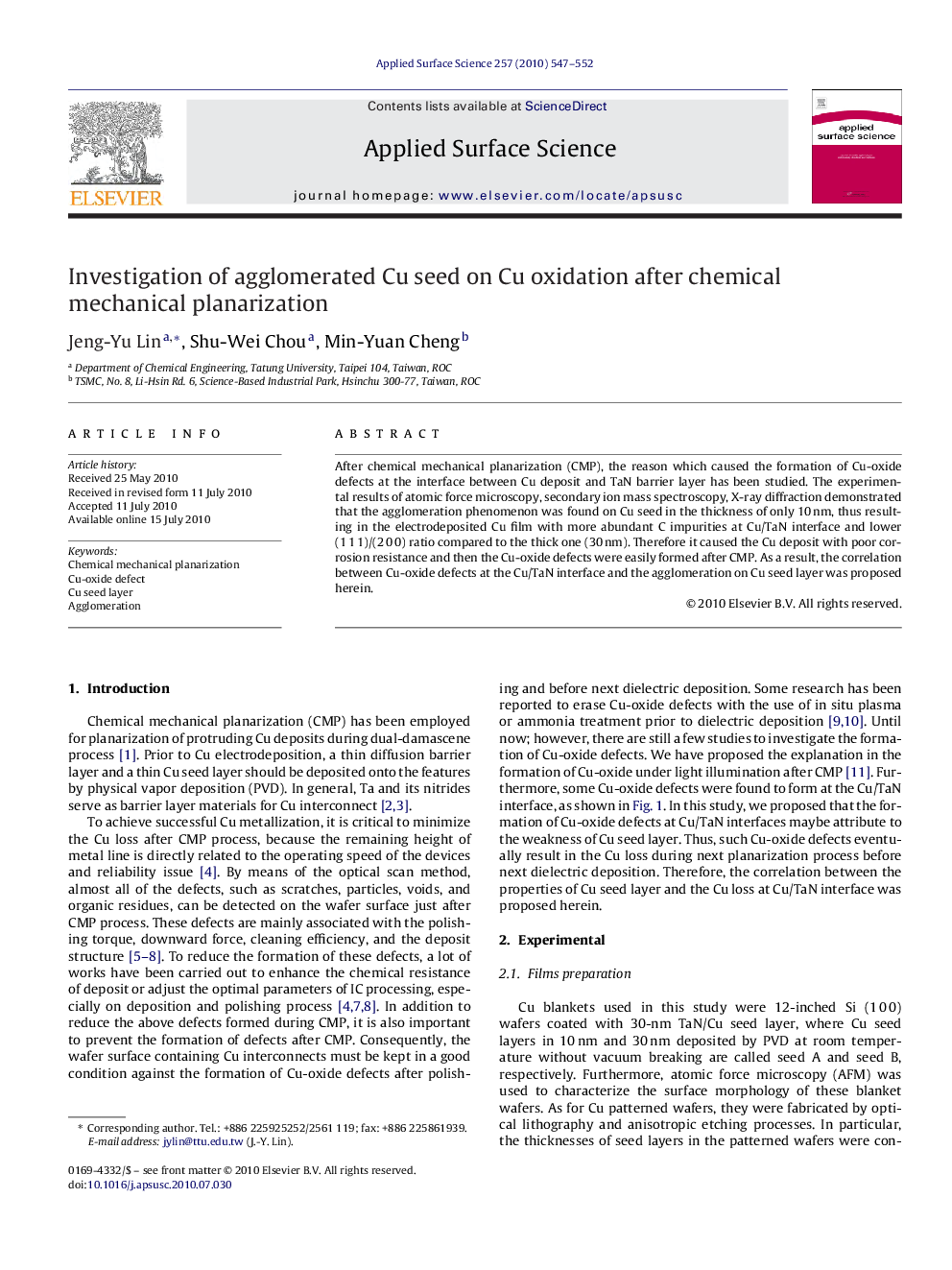| Article ID | Journal | Published Year | Pages | File Type |
|---|---|---|---|---|
| 5364790 | Applied Surface Science | 2010 | 6 Pages |
After chemical mechanical planarization (CMP), the reason which caused the formation of Cu-oxide defects at the interface between Cu deposit and TaN barrier layer has been studied. The experimental results of atomic force microscopy, secondary ion mass spectroscopy, X-ray diffraction demonstrated that the agglomeration phenomenon was found on Cu seed in the thickness of only 10Â nm, thus resulting in the electrodeposited Cu film with more abundant C impurities at Cu/TaN interface and lower (1Â 1Â 1)/(2Â 0Â 0) ratio compared to the thick one (30Â nm). Therefore it caused the Cu deposit with poor corrosion resistance and then the Cu-oxide defects were easily formed after CMP. As a result, the correlation between Cu-oxide defects at the Cu/TaN interface and the agglomeration on Cu seed layer was proposed herein.
